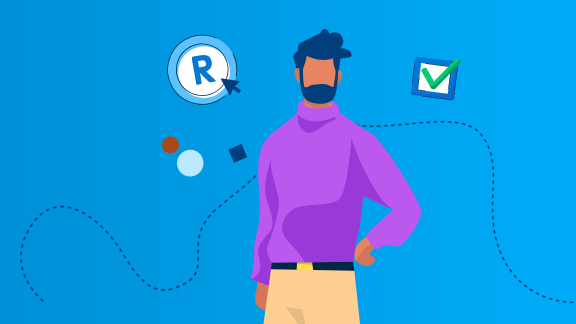As an entrepreneur you make mistakes. That’s how you learn. With some mistakes, though, you would rather have known beforehand how to avoid them. That is also true for intellectual property (IP). Making a mistake with IP can be costly.
Here we list 5 mistakes for you that are frequently made. That way you know exactly how not to do it. Make sure you use this list to your advantage!

1. Publicising ideas without checking whether you lose any rights in doing so
You can really cause yourself a big problem if you make your innovative ideas public too early. Have you shown your (technical) innovation during a PowerPoint presentation or at a trade show? If so, then you can no longer apply for a patent. What's more, regarding protecting a registered design in the Benelux or the EU, 1 year after making it public it can no longer be recorded.
If you want to hold on to your competitive advantage, don’t give your ideas away freely to your competitors. Check whether something needs to be protected before you make it public. A good starting point is to do the ideeSCAN (Netherlands). IdeeSCAN (Belgium) or the IP Pre-diagnosis (Luxemburg).
2. Not thinking properly about protecting a brand or a brand name
Are you setting up a bike shop and calling it 'The Bike Shop’? That's nice and clear. It is also possible. Be careful, however: everyone can use this name. This sort of ‘non distinctive’ name is difficult to protect as a trademark. Another point to consider is whether your name is actually still ‘available’.
These are things that should be considered in advance to avoid possible legal difficulties. Find out whether your trademark is still available and check whether it is sufficiently distinctive. You can make use of our steps for trademark registration.
3. Making incorrect assumptions: I only need copyright
From the moment that you make an original piece of work, (for example) a text, a piece of artwork, a brochure, a video, a photo, a piece of jewellery, a drawing, an app (to name but a few), you automatically hold the copyright for your work as its creator. That's great, but it is useful to know that some creations are not included under copyright law. So, it is important to check properly how you can best protect your creation. You can read about your options in these helpful ‘smart guides’.
4. Investing in a brand or a brand name without owning the brand
The name of your company or product is very valuable to you. That's why you invest in your marketing. That investment is risky though if you do not own the name of your company or product as a trademark. Just to be clear, registering with the Dutch Chamber of Commerce (Netherlands), the Crossroads Bank for Enterprises (KBO Belgium) or the Chamber of Commerce (Luxemburg) does not mean you own your brand name. Only registering your trademark makes you an owner. Take a look at the 7 extra advantages trademark registration offers.
5. Not making any agreements about IP when you start working with others
You get there quicker on your own; you get further with others. If you are going to work together with others, however, you should make proper agreements about the IP rights of all the partners. This means thinking about rights to inventions, designs, software and brand names. The clearer the agreements made with respect to the various IP rights, the lower the risk of conflict and legal disputes. You can record who the owner is of which IP rights, who may use the IP rights or use them under licence, and how the proceeds from the IP rights are distributed.
If you want to make sure you have everything properly covered, look for and engage the services of a legal professional in intellectual property.



